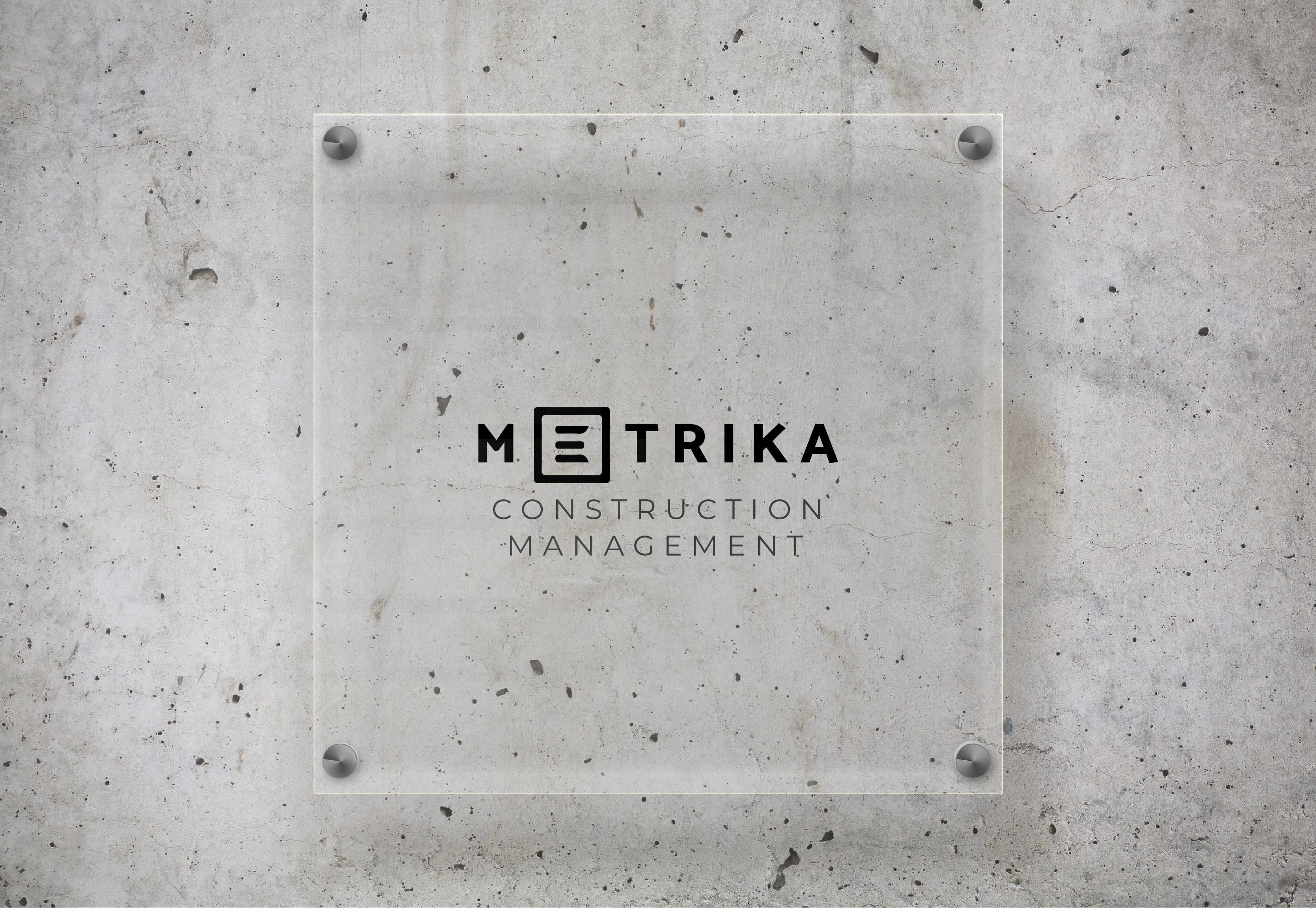Who We Are
The construction management company “Metrika” was founded in 2020 by a team with many years of experience. The company provides professional services related to the planning, designing and construction of buildings and other infrastructure projects. Our main scope is consulting/management of construction projects, design stage management, construction budgeting and tender management, construction supervision. The company’s primary objective is to ensure that the project is completed on time, within budget and in accordance with the required quality standards. To achieve this goal, “Metrika” works closely with the project team, including architects, engineers, contractors and subcontractors, to coordinate their activities and ensure that the project proceeds according to plan.
Projects
Services
Pre-construction stage
Design management in construction is a process-oriented approach to managing the design, development and implementation of a project. This means it involves managing and directing the activities of designers, engineers and architects who are specifically responsible for creating the design of the project.
Construction cost estimating is a comprehensive calculation to determine the total budget needed to complete a project.
Construction reporting is preparing formal documents that give information on critical events, project stages, and processes to the relevant stakeholders. These reports are generally written documents with data. They can also describe the state of individual components in a project or the budget state.
Schedule Management is the process of defining project tasks and their durations, dependencies, and assigned resources in order to complete the project within a designated time frame.
BIM Coordination Services is an important design criterion and process used in all construction projects. It provides better collaboration within the design domain to get an accurate digital representation amongst all three disciplines of any construction project. Clash Detection Services is the initial stage in the BIM Coordination Process which identifies clashes by getting accurate interferences to check reports that is vital for BIM Model trades.
Document control on the preconstruction stage refers to the management of documents and information during the planning and design phase of a construction project. This involves creating, organizing, and tracking various types of documents, such as drawings, specifications, contracts, permits, and other project-related information.
Value Engineering refers to a systematic and collaborative approach to identify and eliminate unnecessary costs in a construction project while maintaining or improving its functionality, quality, and overall value. During the preconstruction stage, VE can be used to evaluate the design, materials, and construction methods proposed for the project, and to identify opportunities for cost savings or value enhancements without sacrificing project objectives or performance.
Architectural and interior design on the preconstruction stage is controlled in order to implement a clear and comprehensive design review process. It involves verifying that the design meets the project requirements and specifications, ensuring that it is feasible and cost-effective, and identifying any potential issues or conflicts. The management company communicates with the design team regularly to ensure that the design is progressing as planned and that any changes or revisions are documented and approved.
Tendering Stage
Logistics on the tender stage refers to the planning and management of the transportation, storage, and distribution of materials and equipment required for the project. This includes identifying the most efficient and cost-effective means of transporting materials and equipment to the construction site, as well as determining the necessary storage and handling requirements.
Tender document control, preparation, and management is the process of creating, organizing, and managing the various documents and information required for a construction project tender. This includes developing the tender documents, issuing them to prospective bidders, and managing the submission and review of bids.
It is the process of identifying and evaluating potential contractors or suppliers who may be suitable for the construction project. This process helps the project owner or manager to ensure that only qualified and competent companies are invited to submit bids for the project.
Clarification meetings on the tender stage refer to meetings that are held between the project owner or manager and potential bidders to discuss the project requirements, scope, specifications, and any other relevant information. These meetings provide an opportunity for bidders to ask questions, seek clarification, and obtain additional information about the project before submitting their bids.
Reporting and nomination on the tender stage refer to the process of evaluating bids received from potential contractors or suppliers, and selecting the most suitable bidder to be awarded the contract. This process involves reviewing and comparing the bids against the project requirements and evaluation criteria, and preparing reports and recommendations for the project owner or manager.
Contract management on the tender stage refers to the process of creating, negotiating, and managing the contractual agreements between the project owner or manager and the successful bidder. This process involves reviewing and finalizing the terms and conditions of the contract, monitoring the progress of the project, and resolving any issues that may arise during the construction phase.
Construction Stage
Cost control on the construction stage refers to the process of monitoring and managing project costs to ensure that the project is completed within budget. Effective cost control requires careful planning, ongoing monitoring, and timely intervention to address any cost overruns or variances.
Schedule control on the construction stage refers to the process of managing and monitoring the project schedule to ensure that the project is completed on time.
Construction supervision refers to the process of overseeing the construction process to ensure that the project is completed in accordance with the project plan, specifications, and quality standards
Reporting at the construction stage involves the regular documentation and communication of project progress, including any issues or challenges encountered, to relevant stakeholders. This may include regular updates to the project team, contractors, and the client to ensure that everyone involved is aware of the status of the project and any potential delays or changes. The purpose of reporting is to keep all stakeholders informed and to help facilitate timely decision-making to keep the project on track.
Value engineering during construction is a process of analyzing and optimizing the project design and construction methods to identify opportunities to reduce costs and improve project efficiency. This involves evaluating various design and construction alternatives to find the most cost-effective solutions that meet project requirements without compromising quality or safety.
Quality assurance (QA) involves the process of planning, designing, and implementing a system to ensure that the project meets the required quality standards. The QA process includes the development of quality control procedures, the establishment of standards and guidelines for construction, and the monitoring of construction to ensure that it meets these standards. Quality control (QC) involves the actual monitoring and testing of construction work to ensure that it meets the required quality standards. This includes the inspection of materials and equipment, the testing of construction processes and procedures, and the measurement and analysis of construction outcomes.
Risk management on the construction stage involves identifying potential risks and implementing strategies to mitigate them to ensure project success. This involves assessing and managing risks related to safety, financial, environmental, and schedule concerns to minimize the likelihood and impact of negative events.
Document control on the construction stage involves the process of managing and organizing all project documentation, including plans, specifications, contracts, and correspondence, to ensure that the correct versions are accessible to the appropriate stakeholders. This involves creating a system for document storage, retrieval, and distribution, as well as ensuring that all documentation is up-to-date, accurate, and complete.
Handover and commissioning management involves ensuring the completed project is ready for use and operation, which includes validating that all systems and components are installed and functioning correctly, and transferring the finished product to the owner or operator.
As-built check and control during the construction stage refers to the process of comparing the final constructed project to the original design plans to ensure that all changes and modifications are accurately reflected in the as-built drawings. This involves documenting any changes made during construction and updating the as-built drawings to reflect these changes. The purpose of as-built check and control is to ensure that the final project accurately reflects the intended design and to provide a comprehensive record of the construction process for future reference.
Snag list management and control during the construction stage involves the process of identifying and documenting any defects, errors, or omissions in the construction work and ensuring that they are corrected before the project is handed over to the client. This includes creating a list of items that need to be fixed, assigning responsibility for their resolution, and tracking progress to ensure that all items are addressed in a timely manner. The purpose of snag list management and control is to ensure that the finished project meets the required quality standards and specifications.


